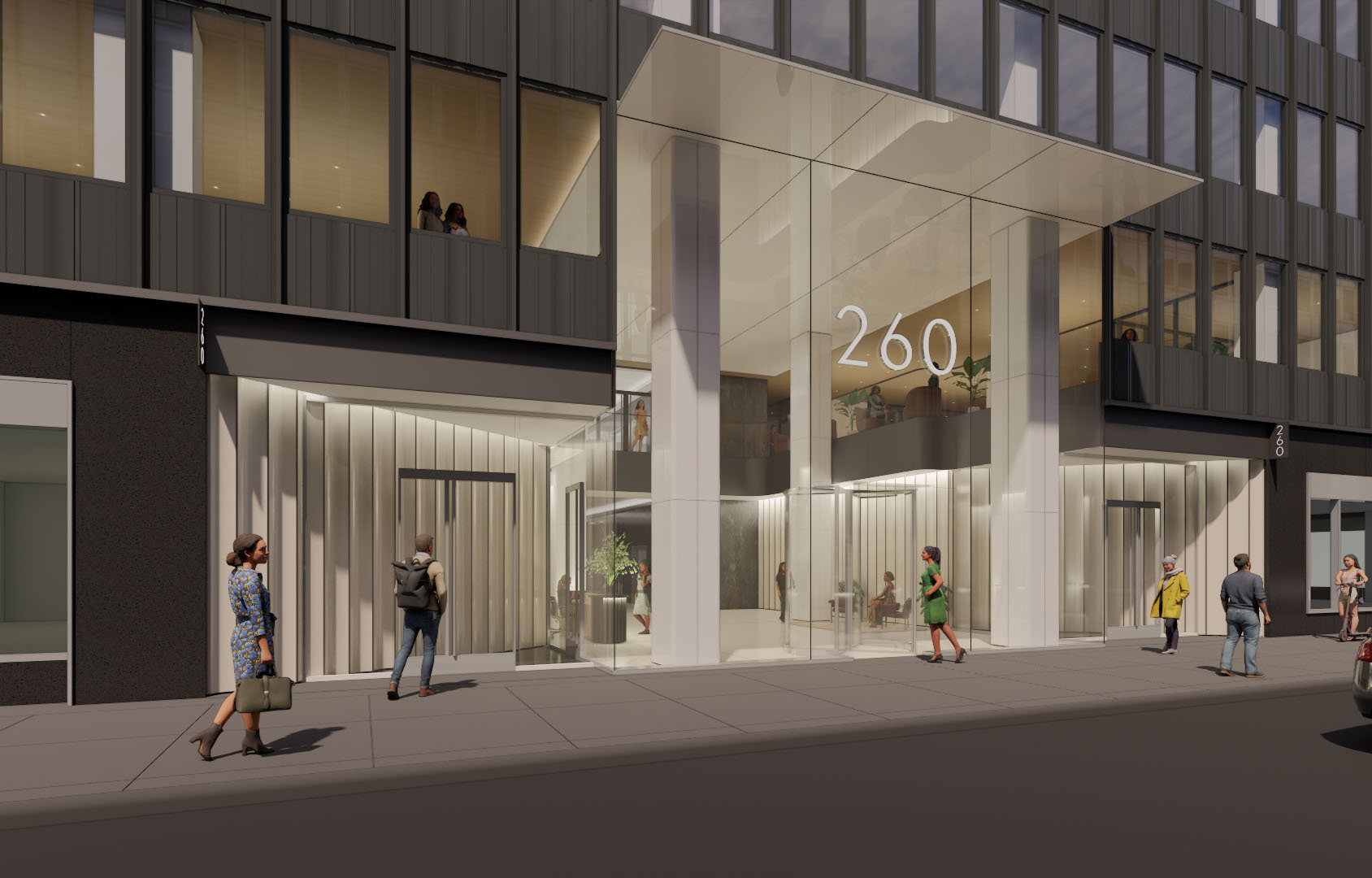Question of the Month: How can owners and landlords avoid access discrimination claims in their commercial spaces? - by Gaetano Bizzoco

Lasser Law Group, PLLC
Commercial landlords are increasingly faced with lawsuits and administrative agency discrimination claims filed by disabled individuals seeking accommodations to allow equal access to office and retail spaces. Federal, state and local laws protect the rights of disabled individuals and were written to break down the barriers that the disabled face day-to-day. The Americans with Disabilities Act (ADA), and similarly the NYS Human Rights Law (NYSHRL) and NYC Human Rights Law (NYCHRL), prohibit discrimination on the basis of disability in the full and equal enjoyment of any place of public accommodation, which includes retail and office spaces such as restaurants, movie theaters, schools, day-care facilities, recreation facilities, professional offices, bakeries, grocery stores, clothing stores, hardware stores, and shopping centers. Failing to provide proper accessibility to disabled individuals could be deemed discrimination under the ADA, NYSHRL and NYCHRL. The NYSHRL and NYCHRL were modelled after the ADA, and while similar, it is important to be familiar with applicable state and local laws to ensure compliance under all three standards.
The ADA has basically two standards for accessibility in buildings. Buildings constructed after 1993 must be built ADA compliant, and buildings constructed prior to 1993 must meet the ADA requirements when they undergo “alterations” as defined by the ADA. Under the ADA, when an alteration changes the property’s usability, the alteration must be completed such that, to the maximum extent feasible, the altered portions are “readily accessible” to disabled individuals, except where it would be virtually impossible. Discrimination cases commonly arise in older buildings constructed prior to 1993 as landlords often make alterations and fail to follow the ADA requirements as well as the similar NYSHRL and local requirements such as those under the NYCHRL.
The good news for landlords is that under the ADA, normal maintenance such as reroofing, painting, wallpapering, asbestos removal, and changes to mechanical or electrical systems are generally not considered alterations. Where there is no “alteration,” the landlord must only ensure that the facility is accessible to disabled individuals to the maximum extent feasible. This is a lower standard for landlords to meet.
If a disabled individual feels he or she has been the victim of discrimination, he or she may sue the building owner, and often the tenant in a retail setting. To prevail on a discrimination claim, the disabled individual must establish: (i) a disability within the meaning of the ADA, (ii) the landlord owns, operates or leases a place of public accommodation, and (iii) the owner-landlord discriminated against him or her on the basis of his or her disability. The third prong is the cause of much litigation because many buildings have entrances and floor plans that are not ADA compliant and thereby deny access to disabled individuals. Should a landlord deny a request to accommodate a disabled individual, it may be construed as discrimination.
A prominent lawsuit involving Kenneth Cole in one of its SoHo retail spaces illustrates the third prong of the ADA discrimination test and how the courts interpret the ADA alteration requirements. Kenneth Cole initially occupied two adjacent retail spaces and later added a third adjacent space. The third space’s entrance was ADA compliant. The three retail spaces were connected and patrons would enter all three spaces through the third space’s entrance. During the lease term, Kenneth Cole surrendered the third space and the landlord allowed Kenneth Cole to make alterations dividing the third space from the other two spaces so that the retail spaces were restored to their original configuration. After the alteration was completed, a disabled individual complained to the landlord and Kenneth Cole that there was no ADA compliant entrance to the two remaining retail spaces. The landlord attempted to make an accommodation but could not properly modify the stairs leading to the entrance door and also remain compliant with the applicable NYC building code. The disabled individual sued for discrimination.
In the lawsuit, the court examined the ADA, NYSHRL and NYCHRL and determined that Kenneth Cole made an alteration when it divided the spaces. The alteration triggered the higher ADA requirements because it changed the usability of the remaining space. The landlord was therefore required to make the space “readily accessible” to disabled individuals to the maximum extent feasible, except where it would be virtually impossible. Ultimately, the court did determine that a permanent solution modifying the entrance stairs was “virtually impossible” due to NYC building code compliance issues and ordered that a moveable temporary ramp be installed.
Under state law, NYSHRL, the criteria for alterations is generally less burdensome for landlords compared to the ADA standards, but it does have some different requirements, so landlords must make sure their alterations comply with the NYSHRL as well as the ADA. On the other hand, the applicable NYC law, NYCHRL, imposes stricter standards for owners when compared to the ADA and the NYSHRL. Therefore, under the NYCHRL standards, landlords may be required to complete alterations that are more extensive than the parallel federal and state statutes.
The ADA, NYSHRL and NYCHRL all provide that if a court determines that a landlord has engaged in discriminatory conduct and orders an accommodation, then the disabled individual is deemed to have prevailed and is awarded reimbursement of legal fees. However, if a landlord prevails, the landlord must show that the disabled individual’s claim was frivolous in order to be entitled to reimbursement of its legal fees. This unlevel playing field provides incentive for plaintiff attorneys to seek out these potentially lucrative discrimination cases, which can be costly for landlords to defend.
To best protect themselves, landlords must understand and comply with the federal and New York State guidelines, as well as local laws such as the NYCHRL, when making alterations. It is also imperative that landlords have an open dialogue with disabled individuals making a request for an accommodation in good faith to address their needs. Prior to making alterations or approving a tenant’s alterations, landlords should consult with experienced architects, engineers and attorneys who are familiar with the applicable federal, state and local requirements.
Commercial landlords are increasingly faced with lawsuits and administrative agency discrimination claims filed by disabled individuals seeking accommodations to allow equal access to office and retail spaces. Federal, state and local laws protect the rights of disabled individuals and were written to break down the barriers that the disabled face day-to-day. The Americans with Disabilities Act (ADA), and similarly the NYS Human Rights Law (NYSHRL) and NYC Human Rights Law (NYCHRL), prohibit discrimination on the basis of disability in the full and equal enjoyment of any place of public accommodation, which includes retail and office spaces such as restaurants, movie theaters, schools, day-care facilities, recreation facilities, professional offices, bakeries, grocery stores, clothing stores, hardware stores, and shopping centers. Failing to provide proper accessibility to disabled individuals could be deemed discrimination under the ADA, NYSHRL and NYCHRL. The NYSHRL and NYCHRL were modelled after the ADA, and while similar, it is important to be familiar with applicable state and local laws to ensure compliance under all three standards.
The ADA has basically two standards for accessibility in buildings. Buildings constructed after 1993 must be built ADA compliant, and buildings constructed prior to 1993 must meet the ADA requirements when they undergo “alterations” as defined by the ADA. Under the ADA, when an alteration changes the property’s usability, the alteration must be completed such that, to the maximum extent feasible, the altered portions are “readily accessible” to disabled individuals, except where it would be virtually impossible. Discrimination cases commonly arise in older buildings constructed prior to 1993 as landlords often make alterations and fail to follow the ADA requirements as well as the similar NYSHRL and local requirements such as those under the NYCHRL.
The good news for landlords is that under the ADA, normal maintenance such as reroofing, painting, wallpapering, asbestos removal, and changes to mechanical or electrical systems are generally not considered alterations. Where there is no “alteration,” the landlord must only ensure that the facility is accessible to disabled individuals to the maximum extent feasible. This is a lower standard for landlords to meet.
If a disabled individual feels he or she has been the victim of discrimination, he or she may sue the building owner, and often the tenant in a retail setting. To prevail on a discrimination claim, the disabled individual must establish: (i) a disability within the meaning of the ADA, (ii) the landlord owns, operates or leases a place of public accommodation, and (iii) the owner-landlord discriminated against him or her on the basis of his or her disability. The third prong is the cause of much litigation because many buildings have entrances and floor plans that are not ADA compliant and thereby deny access to disabled individuals. Should a landlord deny a request to accommodate a disabled individual, it may be construed as discrimination.
A prominent lawsuit involving Kenneth Cole in one of its SoHo retail spaces illustrates the third prong of the ADA discrimination test and how the courts interpret the ADA alteration requirements. Kenneth Cole initially occupied two adjacent retail spaces and later added a third adjacent space. The third space’s entrance was ADA compliant. The three retail spaces were connected and patrons would enter all three spaces through the third space’s entrance. During the lease term, Kenneth Cole surrendered the third space and the landlord allowed Kenneth Cole to make alterations dividing the third space from the other two spaces so that the retail spaces were restored to their original configuration. After the alteration was completed, a disabled individual complained to the landlord and Kenneth Cole that there was no ADA compliant entrance to the two remaining retail spaces. The landlord attempted to make an accommodation but could not properly modify the stairs leading to the entrance door and also remain compliant with the applicable NYC building code. The disabled individual sued for discrimination.
In the lawsuit, the court examined the ADA, NYSHRL and NYCHRL and determined that Kenneth Cole made an alteration when it divided the spaces. The alteration triggered the higher ADA requirements because it changed the usability of the remaining space. The landlord was therefore required to make the space “readily accessible” to disabled individuals to the maximum extent feasible, except where it would be virtually impossible. Ultimately, the court did determine that a permanent solution modifying the entrance stairs was “virtually impossible” due to NYC building code compliance issues and ordered that a moveable temporary ramp be installed.
Under state law, NYSHRL, the criteria for alterations is generally less burdensome for landlords compared to the ADA standards, but it does have some different requirements, so landlords must make sure their alterations comply with the NYSHRL as well as the ADA. On the other hand, the applicable NYC law, NYCHRL, imposes stricter standards for owners when compared to the ADA and the NYSHRL. Therefore, under the NYCHRL standards, landlords may be required to complete alterations that are more extensive than the parallel federal and state statutes.
The ADA, NYSHRL and NYCHRL all provide that if a court determines that a landlord has engaged in discriminatory conduct and orders an accommodation, then the disabled individual is deemed to have prevailed and is awarded reimbursement of legal fees. However, if a landlord prevails, the landlord must show that the disabled individual’s claim was frivolous in order to be entitled to reimbursement of its legal fees. This unlevel playing field provides incentive for plaintiff attorneys to seek out these potentially lucrative discrimination cases, which can be costly for landlords to defend.
To best protect themselves, landlords must understand and comply with the federal and New York State guidelines, as well as local laws such as the NYCHRL, when making alterations. It is also imperative that landlords have an open dialogue with disabled individuals making a request for an accommodation in good faith to address their needs. Prior to making alterations or approving a tenant’s alterations, landlords should consult with experienced architects, engineers and attorneys who are familiar with the applicable federal, state and local requirements.
Gaetano Bizzoco is senior counsel at Lasser Law Group, PLLC, New York, N.Y.
Berger and Koicim of Marcus & Millichap sell 17-unit multi-family for $8.8 million


Strategic pause - by Shallini Mehra and Chirag Doshi

Behind the post: Why reels, stories, and shorts work for CRE (and how to use them) - by Kimberly Zar Bloorian

Lasting effects of eminent domain on commercial development - by Sebastian Jablonski









.jpg)

.gif)